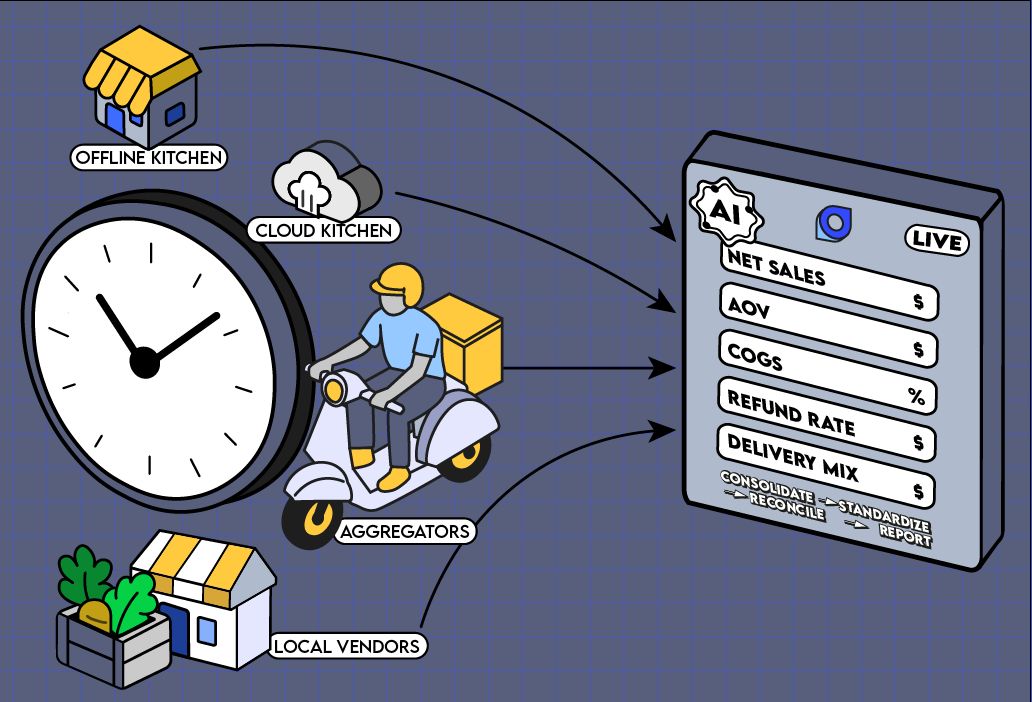Speed without intelligence belongs to yesterday’s automation. As we head into 2026, finance leaders are already moving beyond that illusion of progress. Most enterprises now run digitized Accounts Payable (AP) systems.
Invoices arrive through portals, approvals move through digital workflows, and dashboards report impressive metrics. Yet, finance teams still spend Friday nights chasing exceptions and reconciling anomalies that slip through the cracks.
Automation brought efficiency. Intelligence brings understanding.
Why Automation Has Hit Its Ceiling
After years of transformation projects and system upgrades, AP teams continue to rely on manual oversight.
Recent research by IFOL finds that 63% of AP teams now spend more than 10 hours per week processing invoices, and 66% continue manually entering invoice data into their ERP systems.
Today’s invoices come with more complexity than rule-based systems can handle. Line-item details, split payments, vendor-specific nuances, and compliance requirements often fall outside the limits of predefined workflows. When the process encounters something unfamiliar, it simply stops. Someone has to step in.
That dependency is why exceptions, fraud attempts, and reconciliation delays still plague most enterprises. Automation captured the process but lost the context.
What CFOs Expect in 2026
CFOs no longer see automation as a finish line. They see it as the baseline.
The expectation now is intelligence that connects every point in the finance cycle. Systems should match purchase orders with invoices automatically, identify duplicate submissions before they’re paid, and recommend payment schedules based on cash flow positions.
This new phase of automation doesn’t replace finance judgment; it amplifies it. Enterprises want technology that reasons, not just records.
The Rise of Intelligent AP
Artificial Intelligence (AI) has changed the definition of automation. It recognizes relationships across transactions, learns from every exception, and spots anomalies before they escalate.
An intelligent AP system can:
- Understand the link between purchase orders, goods receipts, and payments.
- Predict mismatches before they occur.
- Surface irregularities and instantly flag them, rather than during reconciliation.
- Adapt with every cycle, reducing manual review over time.
- Maintain compliance and detect potential fraud in real time.
This evolution marks the shift from mechanical workflows to systems that think in context. The technology to make this shift real already exists. AI-driven finance platforms now use large-scale data models and continuous learning to interpret transaction patterns, auto-correct mismatches, and keep ledgers current without human intervention.
Why It Matters in 2026
Automation gave finance teams speed. AI gives them foresight.
The strongest organizations today don’t measure success by how quickly they process invoices; they measure it by how intelligently they interpret and act on the data behind them.
Continuous close, predictive cash flow, and proactive risk detection are fast becoming standard practice. When systems can interpret context, like spotting duplicate invoices before payment, applying early-payment discounts automatically, or flagging supplier risks in real time, finance moves from being reactive to predictive.
Industry benchmarks show that best-in-class AP teams process invoices in roughly 3 days, at a cost of US$3, and with an exception rate under 10%. Manual-heavy processes take far longer, cost several times more, and leave finance teams exposed to recurring errors.
Finance is evolving into a sensing function for the enterprise. It no longer reports what happened; it anticipates what will.
With the global AP automation market expected to reach $7.5 billion by 2030, intelligence has become the differentiator, not efficiency.
The Road Ahead: Effortless, Autonomous Finance
The next chapter of AP is defined by autonomy.
Autonomous finance goes beyond digitization. It interprets, adapts, and acts on context in real time. Exceptions resolve themselves. Reconciliations run continuously. Cash positions stay current without manual oversight.
Today, only one in four enterprises can claim touchless invoice processing at scale, but AI-driven AP systems are closing that gap quickly.
For finance leaders, this shift changes what leadership itself looks like. Instead of managing operations, teams will manage outcomes. Instead of reconciling what went wrong, they’ll analyze what’s about to.
The next generation of finance functions will:
- Extend AI across the entire close-to-disclose cycle, turning accounting events into continuous insights.
- Use AP data as an early signal for liquidity and supplier performance.
- Run finance like a control tower, predicting variances before they occur.
The gap between automated and autonomous finance will define maturity in 2026. The future of AP is not paperless. It is effortless.
Systems will learn. Processes will self-heal. Finance teams will spend more time leading than reconciling.
AI is transforming finance into a living, learning, intelligent ecosystem, one that understands context, makes decisions, and continuously improves.
The next evolution of this shift is already underway. Autonomous AP is moving from concept to reality, helping finance teams operate with speed, accuracy, and awareness in every transaction.
If your organization is ready to take that step, reach out to us to explore how autonomous AP can reshape your finance operations.




